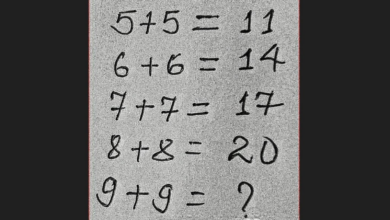This confusing brain teaser has baffled many people online. Do you think you can solve it? | Trending

Brain teasers can be beneficial for your cognitive health and mental well-being. They can help enhance problem-solving skills, boost memory and focus, increase your creativity and judge your problem-solving approach. Here is what the riddle says: “Which one has two zero and two four?” giving three options to choose from. “A: 0024, B:2024, C:0044″(X/@Brainy_Bits_Hub) Apart from testing your mental skills, they are great to reduce stress, enhance cognitive flexibility and build confidence. So if you are ready to solve a brain teasers that can test your mind and boost your focus, we have a tricky maths riddle for you. This brain teaser was shared on X (formerly Twitter) @Brainy_Bits_Hub and has grabbed the attention of many puzzle masters. (Also read:Only a puzzle genius can solve this maths riddle within 30 seconds) Apart from entertaining users, this one will engage the mind, pushing you to think creatively and logically. Here is what the riddle says: “Which one has two zero and two four?” giving three options to choose from. “A: 0024, B:2024, C:0044” Take a look at the viral riddle here: It’s a tricky one, isn’t it? It may appear to be an easy brain teaser but the longer you think, the more complex it becomes. Here’s a hint from us: While focusing on the numbers also focus on the way the question is written. (Also read: You’ve ninja eyes if you can spot the hidden number in this brain teaser) A tricky test of maths and spellingIn a way of thinking, all three options appear to be right. 0024 can be written a two zeros and two four. Option B or 2024 can be spelled out like two zero two four while the third and last option 0044 can also be reads a two zeros and two fours. So, now it is upto you to decide which is the correct answer. Here is another brain teaser for you to try if you are able to solve this one quickly. The brain teaser begins with a series of mathematical equations that, at first glance, appear to be simple addition problems. However, a closer inspection reveals a pattern that does not adhere to conventional arithmetic rules. The puzzle unfolds as follows: 4 + 4 = 8, 5 + 5 = 15, and 6 + 6 = 24. The final equation challenges players to solve for the unknown: 9 + 9 = ?







